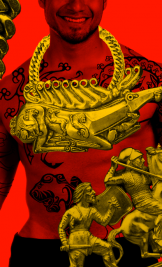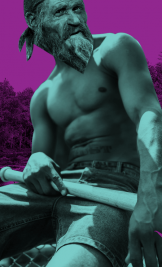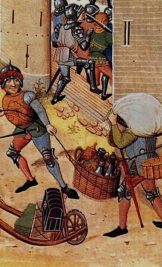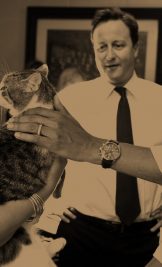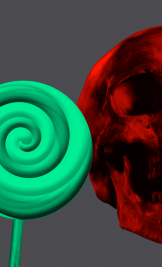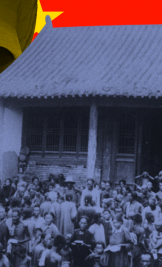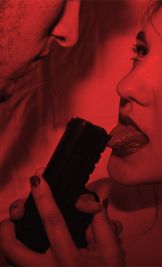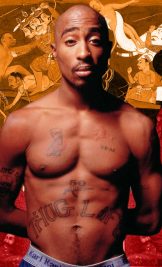

An illustrated guide to moustaches in Turkish politics
The war of the shaved against the moustachioed and bearded: this is how any period of modern Turkish history can be described.
The sultans of the Ottoman Empire have already began to regulate the volume and shape of their subjects’ hair. Any adult Muslim had to grow a beard to distinguish himself from infidels. Janissary warriors shaved their chins and wore hanging moustaches to distinguish themselves from civilians. Sultans wore beards along with moustaches.
In the 1920s, the first president of the Republic of Turkey, Mustafa Kemal, shaved off his moustache to promote the European lifestyle. Officials followed suit. Moustaches became unfashionable, and beards almost indecent.
In modern Turkey, the rules and traditions have been relaxed. However, most civil servants are forbidden to have beards, and a moustache or lack thereof can give away a person’s political views.

The janissary moustache with hanging tips was borrowed in the 20th century by members of the far-right organization Bozkurtlar (‘Grey Wolves’). They claimed that this shape resembled the crescent moon on the Turkish flag and the letter m, the first letter in the word milliyetçi (‘nationalists’).
In the 1970s, Turkey was engulfed in political violence that resembled a civil war in its scale. There were days when the left and right committed a dozen murders each. Over the course of several years, the Grey Wolves lost 1,300 people and killed more than 2,000 themselves.
It was easy for opponents to recognise each other. Leftist activists grew beards, like Karl Marx’s, and long hair. Today, many of the Turkish leftists have short beards called espagnolas. Their political allies, the Kurds, prefer lush mustaches in the style of Joseph Stalin.



In 1980, the Turkish military carried out another coup d’état, suppressing political extremism through large-scale repression. Up to half a million people were arrested, and 517 were sentenced to death. All parties, trade unions, and more than 20,000 civic organisations were banned.
Officers, clean-shaven since the days of Mustafa Kemal, considered any facial hair suspicious. University professors, who usually supported leftist ideas, were forbidden to grow beards. At the same time, the head of the Istanbul transportation organisation where Recep Erdoğan worked demanded that he shave off his moustache, which gave him away as an Islamist.
The future president of Turkey refused and was fired. This act has launched his political career.

Today, Turks joke that before joining Erdogan’s ruling Justice and Development Party, one must learn how to shave properly. Ministers and party officials look alike because they wear the same trimmed moustache in the shape of half an almond.
Islamists groom their moustaches according to religious rules. Mohammed’s followers recorded that he used a blade and a siwak (a short toothbrush). The prophet would put the siwak over his moustache and shave off everything that did not fit under it.


In 2010, a small political revolution took place. The Republican People’s Party was led by Kemal Kılıçdaroğlu. Against the traditions of the Social Democrats, the leading opposition force was headed by a man with a moustache, which has always been a symbol of their political opponents.
Journalists joke that it is difficult to name the next president of Turkey, but it is easy to predict that it will be a moustached man.

The war of the shaved against the moustachioed and bearded: this is how any period of modern Turkish history can be described. In 2010, the crescent moustaches of Turkish border guard special forces became a topic of discussion in parliament. The deputies decided that the symbol compromised by nationalists could cause tension in the Kurdish regions of the country.
The Grey Wolves survived these attacks easily. Both the former and current leaders of their political wing, the Nationalist Movement Party, shaved clean.
Global trends are changing the range of Turkish moustaches. Today young people are looking up to show business stars. Since long moustaches became fashionable among apolitical youth, ordinary nationalists have also begun to give them up.
Today, instead of left-wing activists, it’s Muslim believers who are fighting for the right to wear beards at universities and in the civil service. The ruling Islamist party indulges their desire, especially after the failed coup attempt in 2016. The coup was driven by the military and traditionally shaved supporters of reformed Islam according to Fethullah Gülen.
Meanwhile, there are reports that in southeastern Turkey, members of the Kurdistan Workers’ Party executed bearded men for alleged ties with the Islamic State (ISIS). Civilians in the region are turning to frequent shaving.
Moustaches remain an important symbol in Turkish politics. But a beard seems to be hanging over its future.

